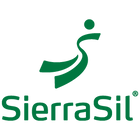Certifications
Informed-Choice

A safe and premium product for all users, SierraSil Joint Formula14™ is Informed-Choice Sport certified. It is tested to be free of banned substances as listed by the World Anti-Doping Agency (WADA).
For more information about the Informed-Choice program, visit http://www.informed-choice.org...
Health Canada Natural Product Number
Health Canada has awarded SierraSil Natural Product Numbers (NPNs) for Joint Formula14™. The approved “recommended use or purpose” for both Joint Formula14 capsules (NPN 80039305) and powder (NPN 80039306) is “used in the temporary relief of joint discomfort.”
The awarding of NPNs by Health Canada follows extensive clinical research and substantial history of use. This first-hand clinical evaluation is unmatched among proprietary natural joint health products in Canada.
We would like to acknowledge the diligent work of key staff Caroline Eve and Michael Rowley as well as vendors including research partners Verdic Life Sciences and KGK Synergize, Canadian regulatory advisor Gowlings Lawyers, and our contract manufacturers for their assistance during the NPN application process. We also want to thank the tens of thousands of loyal SierraSil customers, our natural health and pharmacy retail partners, and our distributors for their continued support.
BC Kosher Checked

Clinical Support
SierraSil®, the active ingredient in Joint Formula14™, has been subjected to rigorous testing and analysis. The consistent outcome of the lab, in vitro and human clinical trials are that SierraSil is a safe and effective way to support joint health and function. Research also shows a fast onset of benefits.
SierraSil® has been subjected to a rigorous level of testing and analysis. From these extensive assessments, experts agree that SierraSil is safe and effective and promotes joint health and function.*
-
Human pilot study
TITLE: A pilot study to test the safety and efficacy of the mineral supplement SierraSil
RESULTS: 100% of the subjects reported a significant improvement within one week of treatment on either SierraSil alone or SierraSil with the cat’s claw, with no concomitant medications (i.e. aspirin, acetaminophen) required or side effects reported. -
Double blind, placebo controlled, study
TITLE: Early relief with a natural mineral supplement and a herbo-mineral combination: A randomized controlled trial
RESULTS: SierraSil was able to produce significant improvement in WOMAC and VAS scores after 8 weeks (P < 0.001) either alone or in combination with Vincaria®. SierraSil groups also produced a faster onset of benefits (at week 1, 2, and 4) in reference to baseline values when compared to placebo group. At 4 weeks, all the SierraSil groups displayed a 38–43% WOMAC improvement.
CONCLUSION: SierraSil alone and in combination with cat’s claw extract improved joint health and function within 1–2 weeks of treatment. SierraSil® may offer an alternative therapy in subjects with joint aches and dysfunction. -
Double blind, placebo controlled, cross-over, study
TITLE: A randomized, double blind, placebo controlled cross over study to explore the efficacy and safety of SierraSil Joint Formula14™ in adults
RESULTS: Subjects with a WOMAC™ Discomfort score between 16 and 33.3 mm at baseline showed a decreasing trend from baseline to week 4. During the washout period, these subjects’ Discomfort scores increased suggesting efficacy of SierraSil. Though subjects on placebo had an initial decrease in Discomfort score from baseline to week 2, an increase was seen by week 4. Subjects with a WOMAC™ Discomfort score between 66.7 and 100 mm at baseline showed a decreasing trend in Discomfort score from baseline to week 2 and plateaued by week 4 for both Placebo and SierraSil. Within groups, subjects on SierraSil demonstrated statistically significant improvements in SF-36 scores from baseline to week 4 for the domains: Physical Function, Role Limitation due to Physical Health, Vitality/Energy, Social Functioning, and Bodily Discomfort. Furthermore, subjects on SierraSil showed statistically significant improvements in Total SF-36 scores, Total Physical Activity and Total Mental Health.
CONCLUSION: The study found that SierraSil was effective in relieving discomfort as indicated by both WOMAC scores and SF-36 scores. SierraSil was found in this study to be effective in temporary relief of joint discomfort, with more profound effect in subjects with normal body weight (BMI < 25.00 Kg/m2), suggesting that larger bodies would benefit from a larger dose than 2 g/day. This study was published in the following Dove Press Journal: Open Access Rheumatology: Research and Reviews 3, Oct 2014. -
Double Blind Placebo Controlled (Cross Over) Pilot Sport Study
TITLE: SierraSil as an ergogenic aid to performance in athletes.
RESULTS: All athletes completed the trial. Sierrasil was well tolerated by highly trained male athletes. There were no adverse effects reported. Following Sierrasil supplementation the peak power increased by 33.8 W (a 3% increase) and mean power by 6.7 W (a 1% increase). In the placebo group the peak power decreased by 11.2 W (-2.6%) and the mean power decreased by 17.2 W (-1%). DOMS values on the VAS were higher in the placebo group at 24, 48 and 72 hrs post-exercise (P= 3.2, 2.2, 1.3 vs. Sierrasil= 2.5, 1.6, 0.6). There were no statistically significant changes in the performance measures between the two groups however (p>0.05). There were no significant changes in the cytokine measures following supplementation with either Sierrasil or placebo.
CONCLUSION: The results showed that Sierrasil is safe to use in highly trained athletes and resulted in improvements in anaerobic power and in reducing the level of DOMS post-exercise that the researchers, Dr. Don McKenzie and Dr. Jack Taunton describe as “sport significant”. -
Toxicology and chelation study
TITLE: The Toxicology and Potential Chelating Effect of SierraSil.
RESULTS: 7 subjects completed the study. The data reveals that arsenic levels appear to rise from T0 to T3 (and from T0 to T6). However, they declined from T3 to T6, although this change was not statistically significant. All the measurements for arsenic levels remained within the normal reference range. If the arsenic in SierraSil was bioaccessible, then the levels should have continued to rise. As a natural chelating agent, ingestion of SierraSil caused a 56.9% decrease in lead between T0 and T6, and a 62.7% decrease between T3 and T6, both of which were statistically significant at the 5% level.
CONCLUSION: It appears that daily ingestion of SierraSil at 4 g/day may have a profound effect on the lowering of lead levels and may have the potential to lower the risk of the adverse health effects associated with lead exposure. -
Long term user medical analysis
TITLE: Long term user medical analysis by Dundarave Medical Clinic, West Vancouver, BC, Canada.
RESULTS: Lab analysis showed that these patients have normal to low-normal profiles of parameters described above, for instance, the cortisol is averaging 350.38 nmol/L when the normal range is 140 – 690 nmol/L, showing that adrenal function of the 9 patients was healthy. A more important and more relevant testing was the C - reactive protein (CRP) as it relates to inflammatory processes in the body. The average CRP level of the 9 patients was 2.2 mg/L where the normal range is < 5.0 mg/L.
CONCLUSION: Patients who are on long term use of SierraSil were found to have a healthy and normal biochemistry profile when compared to the established normal ranges -
Mechanism of Action Study
TITLE: Suppression of Human Cartilage Degradation and Chondrocyte Activation by a Unique Mineral Supplement (SierraSil) and a Cat’s Claw Extract, Vincaria.
RESULTS: Chondrocytes were activated with the addition of the inflammatory cytokine interleukin-1 (5 ng/ml). Measured outcomes were media nitrate/nitrite levels as an index of nitric oxide production, and media glycosaminoglycan (GAG) concentrations as an index of matrix breakdown. Following neutral or alkali washes, a small reduction in GAG release was observed with neutral extracts (p<0.05). The combination of SierraSil + Vincaria significantly reduced both GAG and nitric oxide release under these conditions. Following an acid wash to mimic passage of the material through the stomach, SierraSil alone significantly reduced IL-1-induced GAG release by 68–73% (p<0.01) and SierraSil + Vincaria by 58–77% (p<0.01). Production of NO by human chondrocytes was also reduced by acid-washed SierraSil alone (p<0.05) and was more pronounced with the SierraSil + Vincaria combination (p<0.01) IL-1-induced nitric oxide production and GAG release is known to reflect the activation of inducible pathways (inducible nitric oxide synthase and matrix metalloproteases).
CONCLUSION: The attenuation of these events suggests that SierraSil alone or in this herbo-mineral combination limits cartilage destruction by curtailing these transcriptional events in chondrocytes. Results suggest that this nutraceutical-based therapeutic agent may offer a new approach to limiting joint destruction and immobility. -
Ames test
TITLE: Review of SierraSil Bacterial Reverse Mutation (AMES) Test.
RESULTS: Bacterial toxicity was observed in all strains exposed to DMSO extracts with S9. This limited the maximum exposure concentrations to 2.07 mg eq. per plate for this part of the study. With the addition of S9, exposure to as high as 56.00 mg eq. per plate of DMSO extract did not cause obvious toxicity. Water extract was largely non-toxic with or without S9. Maximum extractable concentration was in this case included in the exposure concentrations that ranged from 0.55 to 44.40 mg eq. per plate. All tester strains showed only background level of reversion at any exposure concentration with either extract. The observed means for triplicate plates of each concentration was largely within the range of the means ± 2 SD of the corresponding solvent controls.
CONCLUSION: It was concluded that the mineral was not mutagenic to S. typhimurium strains TA-98, TA-100, TA-1535, TA-1537 and E. coli strain WP2 uvrA under the test conditions. -
Acute oral toxicity (AOT)
TITLE: Review of SierraSil acute oral toxicity test.
ABSTRACT: The acute oral toxicity study completed on SierraSil found that the acute oral LD50 of SierraSil to be in excess of 2000.0 mg/Kg body weight. No effects of toxicity or mortality were observed at any point during the 14 days of testing. The animals gained weight during the test. Post-testing examination showed no gross pathological findings in any of the five rats. -
Sub-acute oral toxicity (SAOT)
TITLE: Repeated dose 90-day oral toxicity study with 28-day recovery period of SierraSil in Sprague Dawley rats (OECD Protocol 408).
RESULTS: There was no treatment related mortality among rats exposed to SierraSil at all three doses. No findings indicative of neurotoxic potential of the treatment were reported. Body weight gain by treatment group was found to be comparable to that by the control group. Food consumption was also comparable between the treatment group and control group. Hematology, clinical chemistry, urinalysis, organ weights, gross pathology and histopathology all revealed no significant difference between treatment group and placebo group.
CONCLUSION: Based on the findings of this study, the no-observed-adverse-effect-level (NOAEL) of SierraSil® in Sprague Dawley rats, following oral administration for 90 days was found to be more than 1000 mg/kg body weight (equivalent to about 35 times the recommended dosage/serving). -
SAOT liver analysis
TITLE: Repeated dose 90-day oral toxicity study with 28-day recovery period of SierraSil in Sprague Dawley rats.
RESULTS: Total iron content of the liver, total lead content of the liver, total arsenic content of the liver and total aluminum content of the liver were analyzed in 10 rats from the control group and 10 rats from the high dose group (1000 mg/kg body weight of SierraSil®). The weight of the liver was also compared between control and high dose groups. No statistically significant difference was found in any of the above liver analyses.
CONCLUSION: Even at very high dosages there was no accumulation of metals tested in the liver, even a trend to lower lead levels. -
Radiation protection
TITLE: Effect of SierraSil hydrothermal mineral complex (HMC317) on [3H-Methyl] Thymidine uptake in human liver (THLE-2), human normal skin (NHEM) and human melanoma skin cells (A375).
RESULTS: After 24 hours of incubation there was a significant decrease in the amount of radiation detected in THLE-2 cells exposed to all three concentrations of [3H-Methyl] Thymidine in the presence of SierraSil compared to control liver cells. After 24 hours of incubation there was a significant decrease in the amount of radiation detected in NHEM cells exposed to 0.05 μCi of [3H-Methyl] Thymidine in the presence of SierraSil compared to control normal skin cells. After 72 hours of incubation, there was a significant decrease in the amount of radiation detected in A375 cells exposed to 0.05 μCi of [3H-Methyl] Thymidine in the presence of SierraSil® compared to control melanoma cells.
CONCLUSION: Analysis of the data showed that cells cultured in the presence of SierraSil powder demonstrated lower incorporation of [3H-Methyl] Thymidine compared to cells cultured in the absence of SierraSil. The study also established that the absorption of radiation in the form of [3H-Methyl] Thymidine is dose, time and cell type dependent. -
Bio-accessibility testing
TITLE: Dissolution Testing of SierraSil USP
RESULTS: The mean concentration of mercury was 0.213 ± 0.004 μg/0.667g. However, the mean bioaccessibility of mercury was 1.4%. The concentration of lead in the test sample was 4.3 ± 0.04 μg/0.667g, while the bioaccessibility was 0%. The bioaccessibility of cadmium was 108%, however, the concentration of cadmium in the test sample, 0.03 ± 0.002 μg/0.667g, was very close to the limit of detection (0.02 μg/0.667g).
CONCLUSION: The estimated daily intake for elements of potential concern, based on an expected consumption of three 0.667g-capsules per day (containing a total of 2g of SierraSil®), showed that the concentrations of mercury, lead and cadmium in the sample were extremely low and came well within the limits of Health Canada regulations.
For more information on the methods and study designs please see our Professional Reference Guide.
Patents: #7,611,732 / #7,910,136








































